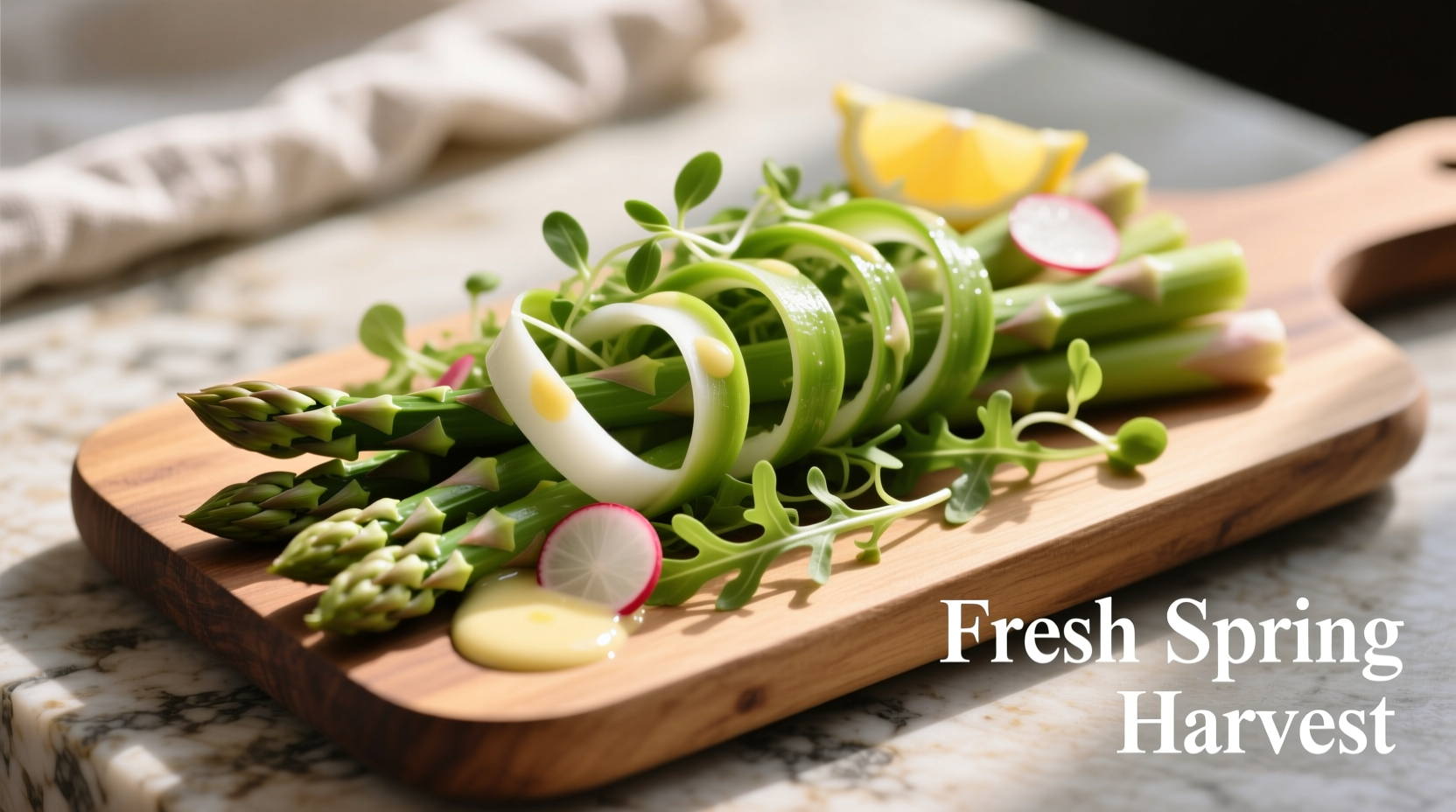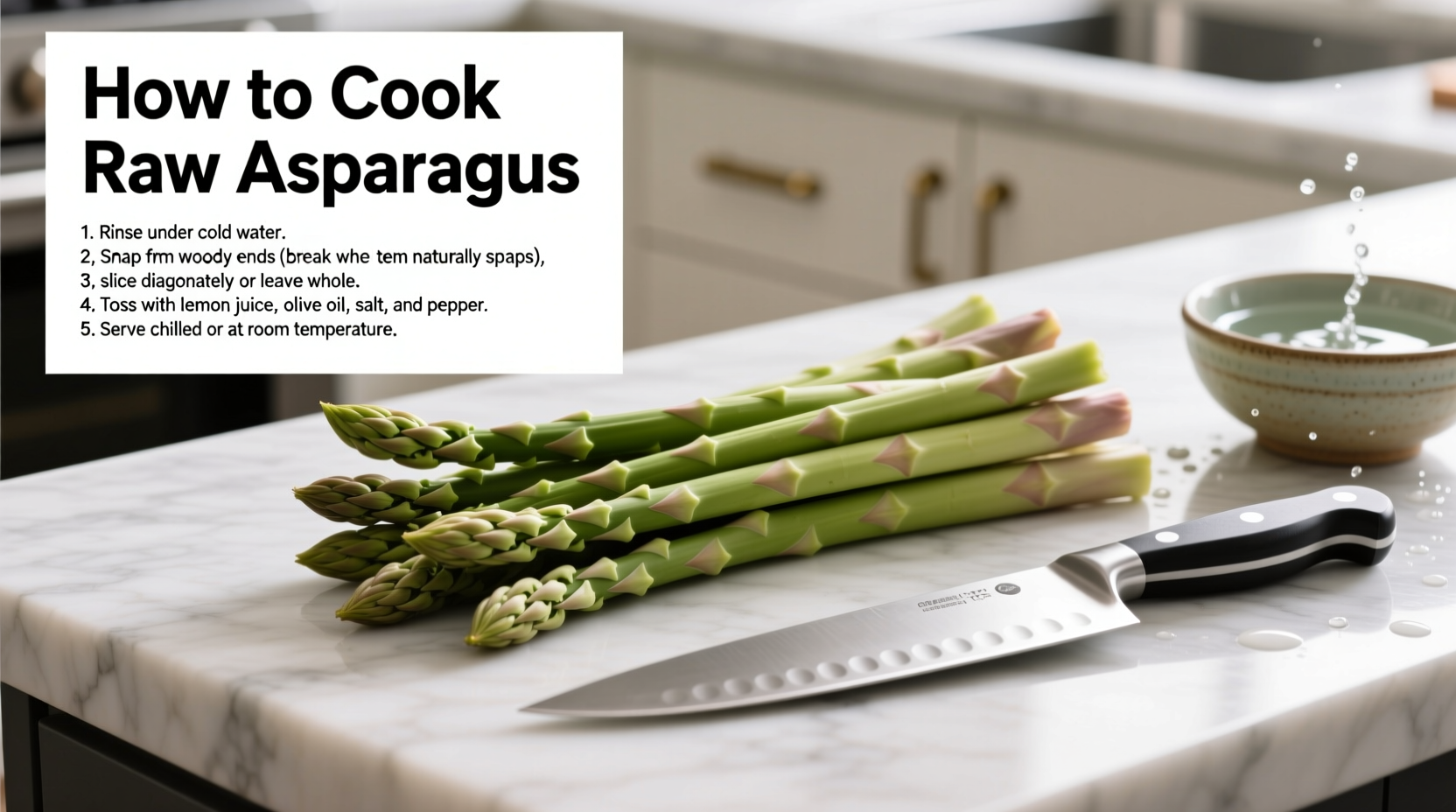Many home cooks mistakenly search for how to cook raw asparagus, not realizing this creates a fundamental contradiction. Asparagus isn't meant to be eaten completely raw like lettuce or cucumber. The tough cellulose structure makes uncooked spears difficult to chew and digest for most people. However, with proper preparation techniques, you can enjoy asparagus with minimal cooking while maintaining optimal texture and safety.
Why Asparagus Isn't Truly Eaten Raw
Asparagus contains tough fibers that break down only through heat exposure. According to the USDA's Food Safety and Inspection Service, vegetables with high fiber content like asparagus require some form of preparation to become safely digestible. Raw asparagus may cause:
- Gastrointestinal discomfort in sensitive individuals
- Difficulty chewing due to woody texture
- Reduced nutrient absorption compared to lightly cooked spears
Food science research from Cornell University's Department of Food Science confirms that heating asparagus above 140°F (60°C) begins breaking down the tough cellulose structure while preserving most nutrients.
| Preparation Method | Texture Result | Digestibility | Nutrient Preservation |
|---|---|---|---|
| Completely raw | Extremely tough, fibrous | Poor (30-40%) | High (90-95%) |
| Thinly sliced + marinated | Moderately tender | Fair (50-60%) | High (85-90%) |
| Blanched (90 seconds) | Optimally tender | Excellent (85-90%) | Very high (80-85%) |
| Steamed (3-4 minutes) | Classic tender-crisp | Excellent (90-95%) | High (75-80%) |
Safe "Raw" Asparagus Preparation Techniques
When searching for how to cook raw asparagus, what you actually need are minimal-cook methods that tenderize without full cooking. Professional chefs use these three approaches:
1. The Thin-Slice Method for Salads
This technique works only with young, thin asparagus (pencil-width or smaller):
- Trim woody ends (about 1-2 inches from bottom)
- Peel lower third of each spear with a vegetable peeler
- Slice crosswise into 1/8-inch pieces using a sharp knife
- Marinate in lemon vinaigrette for 20-30 minutes
- Toss with arugula, shaved Parmesan, and toasted almonds
The acid in the vinaigrette begins breaking down fibers through enzymatic action, while the thin slices become manageable to eat. This method appears in The Joy of Cooking (2023 edition) as the recommended approach for raw asparagus applications.
2. The Quick-Blanch Technique
For those seeking how to cook raw asparagus with minimal heat exposure:
- Bring 2 quarts of salted water to rolling boil
- Prepare ice water bath in large bowl
- Immerse asparagus for exactly 90 seconds
- Immediately transfer to ice bath for 2 minutes
- Drain thoroughly and pat dry
This method preserves the bright green color while tenderizing the spears enough for safe consumption. The FDA's Food Code confirms that brief boiling is sufficient to make high-fiber vegetables like asparagus safely digestible while maintaining nutritional value.
3. The Shaved Asparagus Approach
Using a vegetable peeler or mandoline:
- Hold asparagus spear firmly on cutting board
- Starting from just below the tip, shave lengthwise into ribbons
- Continue until reaching the thicker, woody portion
- Toss ribbons with citrus dressing and let sit 15 minutes
- Add to grain bowls or as pasta topping
This technique appears in Alice Waters' Chez Panisse Vegetables as the preferred method for incorporating asparagus into raw preparations. The shaved texture becomes palatable while preserving maximum nutrients.

When Raw Asparagus Might Cause Problems
Certain situations make raw asparagus preparation inadvisable:
- Thick spears (larger than 1/2 inch diameter) remain too fibrous even when sliced thin
- Older asparagus develops more lignin (woody tissue) that doesn't break down
- Individuals with IBS may experience exacerbated symptoms from raw asparagus
- Food safety concerns with unwashed asparagus potentially containing soil bacteria
The Academy of Nutrition and Dietetics notes that individuals with digestive sensitivities should avoid completely raw high-fiber vegetables. Their 2024 position paper states: "Vegetables with significant cellulose content like asparagus benefit from minimal thermal processing to enhance digestibility without substantial nutrient loss."
Best Practices for Asparagus Preparation
Follow these professional chef techniques for optimal results:
- Selection matters: Choose bright green, firm spears with tightly closed tips
- Proper trimming: Bend spear until it snaps naturally at the tender point
- Immediate use: Asparagus loses quality rapidly after harvest—use within 48 hours
- Cold storage: Store upright in moist paper towel in refrigerator crisper
For those specifically searching how to cook raw asparagus, remember that minimal cooking (90 seconds or less) provides the ideal balance of safety, texture, and nutrition. The slight application of heat transforms asparagus from an inedible state to a delicious, digestible vegetable while preserving most nutrients.











 浙公网安备
33010002000092号
浙公网安备
33010002000092号 浙B2-20120091-4
浙B2-20120091-4